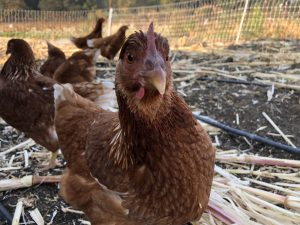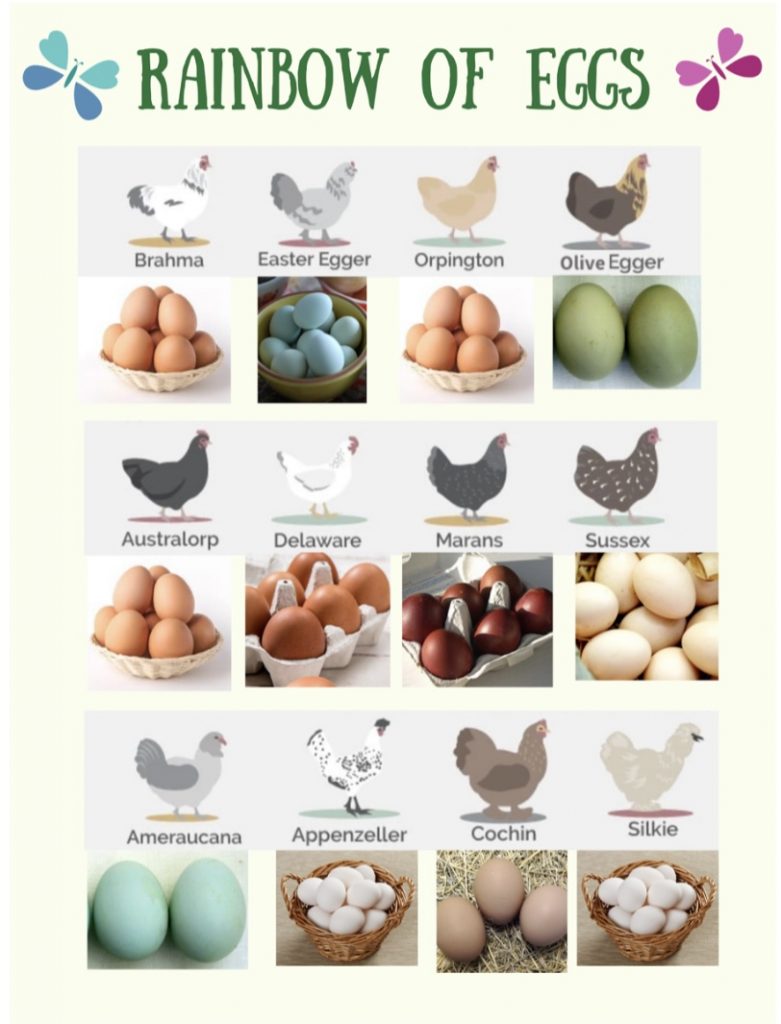
Summary:
Chickens give us eggs, meat and feathers. They have useful adaptations (structures on their bodies that function as tools) to help them feed and escape from predators. By understanding their adaptations we can create an ideal environment for them.
Know-It-All
Now that Sophie and Natalie have shared some interesting facts about chickens with you, expand your knowledge by answering these questions! Feel free to watch the video again if you think you might have missed something. Repetition can help you learn. Have fun!
- Chickens are the smallest animals on our farm. Sophie reminded us that we have to talk quietly and walk slowly in the pen. How do you think chickens see humans? Do they see us as giant chickens? How do you think chickens know which humans are friendly and which ones are scary?
- Chickens are very common farm animals. In fact, some farms have nothing but chickens! In addition, many people keep chickens in their backyards. Why do you think chickens are so popular?
- Describe a healthy home for chickens. Remember to include the four basics: food, water, shelter and space.
- Chickens have no teeth. How do they “chew” their food?
- Why do chickens roost at night?
- Besides beaks and grabbing feet, what other adaptations do chickens have? Remember: an adaptation is a structure, or a kind of tool, that an animal has on its body to help it survive.
Digging Deeper
Did you know….
- Not all chickens lay white eggs. Different breeds of chickens are genetically coded to release different colored pigments onto their egg shells as they pass through the hen’s oviduct, or egg tube, inside her body. Genetic coding is something that is passed from one generation to another. So, if an Araucana breed of hen lays blue eggs, so did her mother!

Try It
The following are fun activities with a chicken theme. Use these suggestions to celebrate this amazing, helpful, beautiful bird.
- Chickens have great balance. They spend the whole night roosting (sitting) on narrow branches. How good is your balance? Head outside with a piece of sidewalk chalk. Draw a straight line on the ground. Try to walk along the line, putting one foot in front of the other without stepping off of the line. Use your outstretched arms for balance. Now, try to walk sideways along the line. How did you do?
- Write a haiku about a chicken. A haiku is a poem with a very special structure. It only has three lines. The first line must have five syllables, the second line has seven syllables and the third line has five. Here’s an example:
-
- Chickens cluck and scratch; Seeking slimy tiny treats; Earthworms, anyone?
-
- We thank our chickens by giving them snacks. They like a mixture of seeds and fruit. Since chickens and humans enjoy many of the same foods, you can make yourself a healthy snack we like to call “Chix Mix” by combining your favorite nibbles in a bowl. Possible ingredients include: chopped almonds, chopped walnuts, peanuts, raisins, dried cranberries, dried apricot pieces, banana chips – pretty much any fruit or nut you enjoy! Get help from an adult and get creative! This is a treat, so half of a cup of the mixture is a perfect serving.
- Have you ever wondered what it is like to lay an egg? Follow Tillie the hen as she attempts to find just the right spot to lay her first egg in Tillie Lays an Egg, by authors Terry Golson and Ben Fin
Print out the guide by downloading the PDF
#325 Student Guide